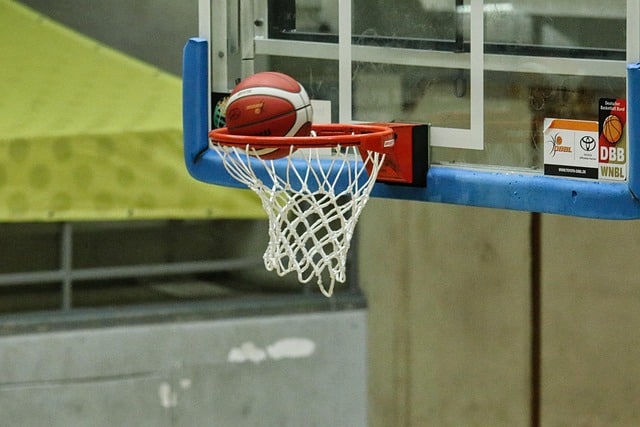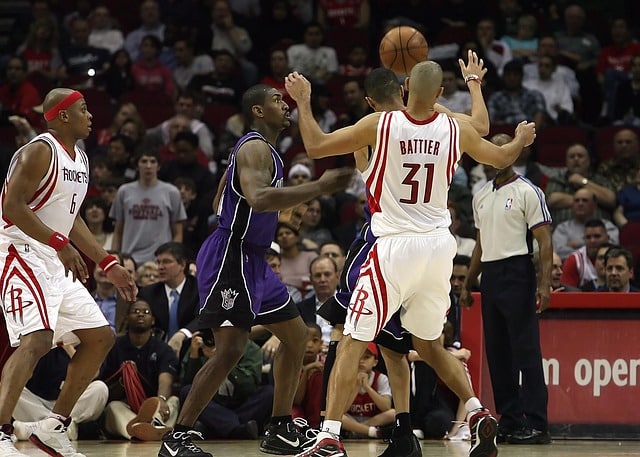Coaching young basketball players is both a privilege and a challenge. As a coach, you have the opportunity to shape not only their skills on the court but also their love for the game. The goal of youth basketball training isn’t just about developing strong basketball players—it’s about instilling confidence, teamwork, and a genuine appreciation for the sport.
Youth player development can be a tricky balance of fun, structure, and skill-building. It’s easy to get lost in focusing on the technical side, but remember that young players are still learning not just the mechanics of basketball, but how to work as a team, deal with success and failure, and build lifelong habits.
In this article, we’ll dive into effective youth basketball training tips that will help you develop well-rounded players who love the game and play it the right way. From age-appropriate drills to fostering teamwork and sportsmanship, we’ll explore the key components that make for a successful basketball program.
1. Focusing on Basic Skills
For young players, the key to becoming good basketball players is mastering the fundamentals. This means focusing on basic skills like dribbling, passing, shooting, and defense. Every great player, no matter how talented, has built their game from the ground up.
Dribbling, for example, is something that every player needs to master. But it’s not just about being able to dribble the ball—it’s about learning to dribble with both hands, control the ball under pressure, and keep it low when being guarded.
One drill to focus on is the two-ball dribbling drill. Have your players dribble two basketballs at the same time, alternating dribbles with both hands. This improves hand-eye coordination, ball control, and confidence in handling the ball. Start slow, then increase the speed as they get better. This drill is fun, effective, and can be done at various skill levels.
Passing is another crucial skill. A youth player who can pass well opens up so many possibilities for the team. Chest passes, bounce passes, and overhead passes are all foundational techniques.
I can still remember the excitement on my own youth team when we finally got the timing of a perfect pass-and-cut combination. It felt like we unlocked a new level of teamwork! The trick here is repetition—passing should become second nature.
For shooting, one mistake many coaches make is pushing too much too soon. It’s tempting to have kids shoot from deep, but developing good form from close range is vital. Start with simple layups, form shooting drills, and work up from there. Keep the shooting form simple—focus on elbow alignment, follow-through, and hand placement.
Defense should also be emphasized from the start. Basic defensive stance, keeping feet shoulder-width apart, and practicing lateral slides are key. Even if they don’t have the best shot, players who excel defensively are invaluable. A defensive drill that I’ve seen great results with is the mirror drill. One player assumes a defensive stance while the other tries to move in different directions. The defender mirrors every move, staying low and in front. This works well for building agility, discipline, and awareness.

2. Age-Appropriate Training
When working with youth players, age-appropriate training is essential. It’s crucial to remember that kids are at different stages in their physical and mental development. What works for a high school athlete might not resonate with a 7-year-old.
For younger players, training should be focused on fun and engagement. Basketball can be a bit intimidating when you’re just starting out, so try to integrate fun drills that keep players active without putting too much pressure on them. For instance, turning basic drills like dribbling relays or shooting games into challenges or games helps keep things light and enjoyable. If they’re having fun, they’re more likely to stick with the sport.
At the same time, for older kids who are moving toward more competitive levels, the focus should shift to refining those basic skills and introducing game-like scenarios. For example, introducing pick-and-roll scenarios, teaching offensive spacing, and developing basketball IQ will take their skills to the next level. But don’t rush it—building confidence with the fundamentals first will make them more receptive to advanced concepts.
3. Building Teamwork and Sportsmanship
Basketball is a team sport, and youth players must understand that teamwork and sportsmanship are just as important as developing individual skills. Players need to learn how to cooperate with others, make selfless plays, and support their teammates—on and off the court.
As a coach, you can model good sportsmanship by showing respect for your players, the opposing team, and the officials. Encourage your players to cheer for each other and always play fairly. A team-oriented culture should be instilled from the very beginning, and one way to do this is by emphasizing passing and unselfish play. Running drills that encourage teamwork, like 3-on-3 scrimmages, is a great way to teach kids how to pass, cut, and move without the ball.
One drill I love for teaching teamwork is the pass-and-move drill. Players pass to a teammate, then immediately sprint to fill the space left open by the pass. This drill mimics real-game scenarios where players have to pass and then quickly transition into a new position. It helps with timing, positioning, and overall basketball awareness.
Additionally, praise teamwork over individual performance. For example, if a player makes a great pass or sets a solid screen, be sure to acknowledge it. Recognizing unselfish play encourages players to focus on the success of the team rather than individual glory.
4. Encouraging Youth Players
One of the most important aspects of coaching youth basketball is keeping players motivated and encouraged. It’s easy for young athletes to get discouraged, especially when they make mistakes. As a coach, you must foster a positive environment where players feel comfortable making mistakes and learning from them.
Positive reinforcement is key. Instead of just focusing on mistakes, make sure to highlight what they’re doing well, no matter how small. Did a player show improvement in their shooting form? Praise them. Did they hustle down the court during a fast break? Acknowledge it. This encouragement goes a long way in boosting their confidence.
I remember a time when I was a young player—I wasn’t the best shooter, but my coach noticed my effort and hustle on defense. He always gave me a high-five after a solid defensive play. That positive reinforcement kept me coming back to practice, even when I wasn’t hitting all my shots.
5. Fun Basketball Drills for Kids
Incorporating fun drills into training keeps things exciting and engages players at all levels. The key is to find drills that combine skill development with enjoyment. Here are a few ideas:
- Dribbling Sharks and Minnows: A classic fun drill where one or two players (the “sharks”) try to tag the other players (the “minnows”) as they dribble from one side of the court to the other. This improves dribbling skills while keeping things competitive.
- Around the World Shooting: Players take shots from various spots around the court, trying to make them in a certain order. It’s competitive, fun, and helps players work on their shooting form and range.
- Relay Races with Ball Handling: Set up a course with cones, and have players dribble through the course as fast as possible. This drill teaches ball control and helps develop speed and agility.
6. Coaching Young Players: Patience and Flexibility
One of the most important tips I can give as a coach is to be patient and flexible. Young players are still figuring out their strengths and weaknesses. Their attention span isn’t the same as a high schooler or adult, so adapt your training methods accordingly. If a drill isn’t working, don’t be afraid to switch it up or adjust the focus. Remember, the goal isn’t to create perfect players overnight—it’s to lay a foundation for growth and development.
Also, always remember to listen to your players. Sometimes, a simple conversation can give you insight into what they enjoy or what they’re struggling with. By keeping the lines of communication open, you can foster a relationship built on trust and mutual respect.
Conclusion: Developing the Next Generation of Basketball Stars
Coaching youth basketball is one of the most rewarding experiences you can have. Through effective training, you’re not just teaching basketball skills—you’re shaping future leaders and fostering a love for the game. By focusing on basic skills, providing age-appropriate training, encouraging teamwork, and offering positive reinforcement, you’ll be laying the groundwork for a generation of players who are not just good at basketball, but also understand the values of sportsmanship and hard work.
Remember, the most important thing is to keep it fun. When young players are having fun, they’re learning, improving, and building memories they’ll carry with them for the rest of their lives. So, get out there, enjoy the process, and watch your players grow!



